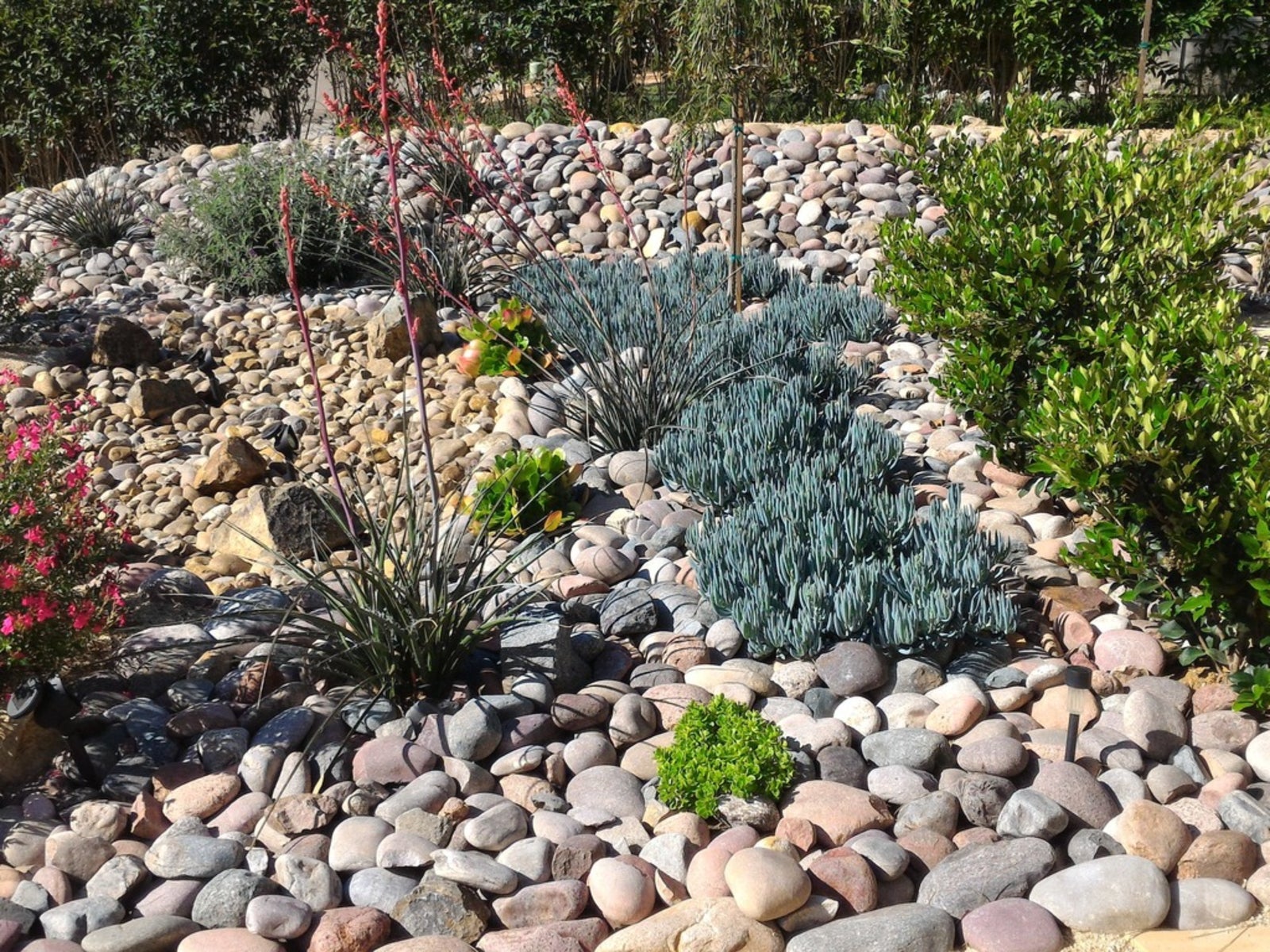Xeriscape Principles: Tips For Water-Wise Xeriscaping


Oregon State University Extension reports that across the nation irrigation of landscapes accounts for one-third of water used, meaning less water for drinking, agriculture, or wildlife. Recent drought conditions across most of the country present major challenges, which requires us, as gardeners, to step up our water conservation efforts. Armed with an understanding of basic xeriscape principles, we can enjoy beautiful gardens without wasting valuable resources. Read on for water-wise gardening tips.
Basic Xeriscape Principles
Here are seven basic tips for water-wise xeriscaping:
- Plan and design carefully for water conservation. Planning xeriscape designs requires careful consideration of many factors, including not only water requirements, but budget, function, aesthetics, and expected maintenance, both now and in the future.
- Improve soil quality. Work towards a goal of soil that drains well while retaining adequate moisture to sustain plant life. Drought-tolerant plants require well-drained soil and won’t survive in soggy, poorly-drained soil. In many cases, improving soil means adding several inches (8 cm.) of organic material, such as compost or shredded bark, worked into the top 6 to 8 inches (15-20 cm.) of soil. Keep in mind, however, that some water-wise plants thrive in poor, dry, rocky soil.
- Reduce turf grass and other water wasting plants. Planning xeriscape designs doesn’t mean you have to give up the idea of a lush, green lawn. However, because it demands huge amounts of water, lawns should be kept to a minimum and should consist of drought-tolerant grass appropriate for your area. Consider replacing part or all of your lawn with low-water groundcovers or other lawn alternatives, which are drought-tolerant and usually require little or no fertilizer, insecticides, or herbicides.
- Select plants best-suited for your area. Take time to learn about choosing xeriscape plants or native plants that thrive in your particular location, as native plants are able to tolerate weather conditions better than exotic, non-native plants. Native plants also withstand pests and disease while attracting beneficial insects such as honeybees, ladybugs, and butterflies.
- Water efficiently. Don’t overwater and use water wisely. For example, use a drip irrigation or soaker hose that directs moisture directly to plant roots. Water in the morning to prevent moisture loss through evaporation. Avoid wasteful sprinklers that produce a fine mist or fling water high into the air or onto your driveway or sidewalk. Water plants deeply and infrequently to develop long, healthy, drought-tolerant root systems. Avoid shallow watering, which creates shallow, thirsty roots.
- Use mulch appropriately. Mulch, such as bark chips or compost, provides a number of benefits in a water-wise landscape, as 2 to 3 inches (5-8 cm.) or natural mulch can prevent evaporation, keep roots cool and moist, and prevent growth of weeds. Mulch also creates an attractive, natural appearance and returns nutrients to the soil. Be sure to replenish mulch as it decomposes or blows away.
- Maintain the landscape properly. Xeriscaping requires careful planning but the result is an attractive, low-maintenance yard. However, no landscape is entirely maintenance free. Prune shrubs and trees when necessary. Deadhead flowers. Pull weeds. Rake plant debris to prevent disease and pests. Maintain a healthy compost pile.
Additional Water-Wise Gardening Tips
Don’t fertilize lawns or plants excessively, as fertilizer encourages rapid growth that demands more water. Consider alternative, more advanced ways of conserving water. For example, many gardeners in rainy climates are finding ways to incorporate rain barrels or rain gardens. It’s also possible to recycle gray water (household water from washing machines or showers). Take advantage of shady areas. Even areas with dappled light or partial shade require far less water than plants in hot, blazing sun. Similarly, plant wisely in windy areas where soil dries quickly.
Gardening tips, videos, info and more delivered right to your inbox!
Sign up for the Gardening Know How newsletter today and receive a free copy of our e-book "How to Grow Delicious Tomatoes".

A Credentialed Garden Writer, Mary H. Dyer was with Gardening Know How in the very beginning, publishing articles as early as 2007.
-
 12 Lush Alternatives To A Lawn For Sustainable Spaces
12 Lush Alternatives To A Lawn For Sustainable SpacesAlternatives to a lawn are beautiful and also beneficial to your local ecosystem and its pollinators. Explore our top picks for plants to replace grass.
By Tonya Barnett
-
 Types Of Tomatoes Explained: Explore The Many Wonderful Shapes, Colors, Flavors, & Best Uses
Types Of Tomatoes Explained: Explore The Many Wonderful Shapes, Colors, Flavors, & Best UsesThe world of tomato varieties is vast and fascinating. Learn about the key types to grow in your garden, tailored to your preferences and space.
By Amy Grant